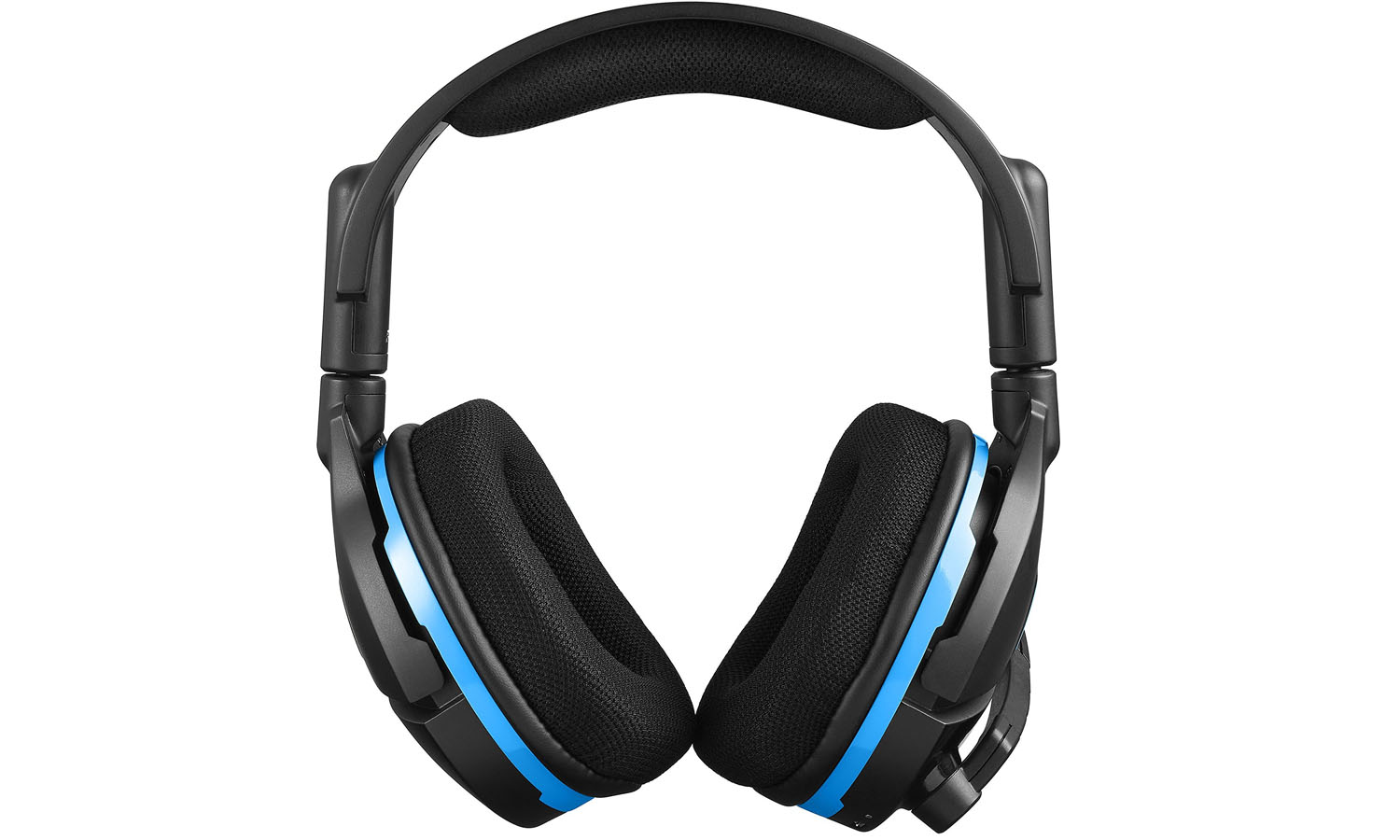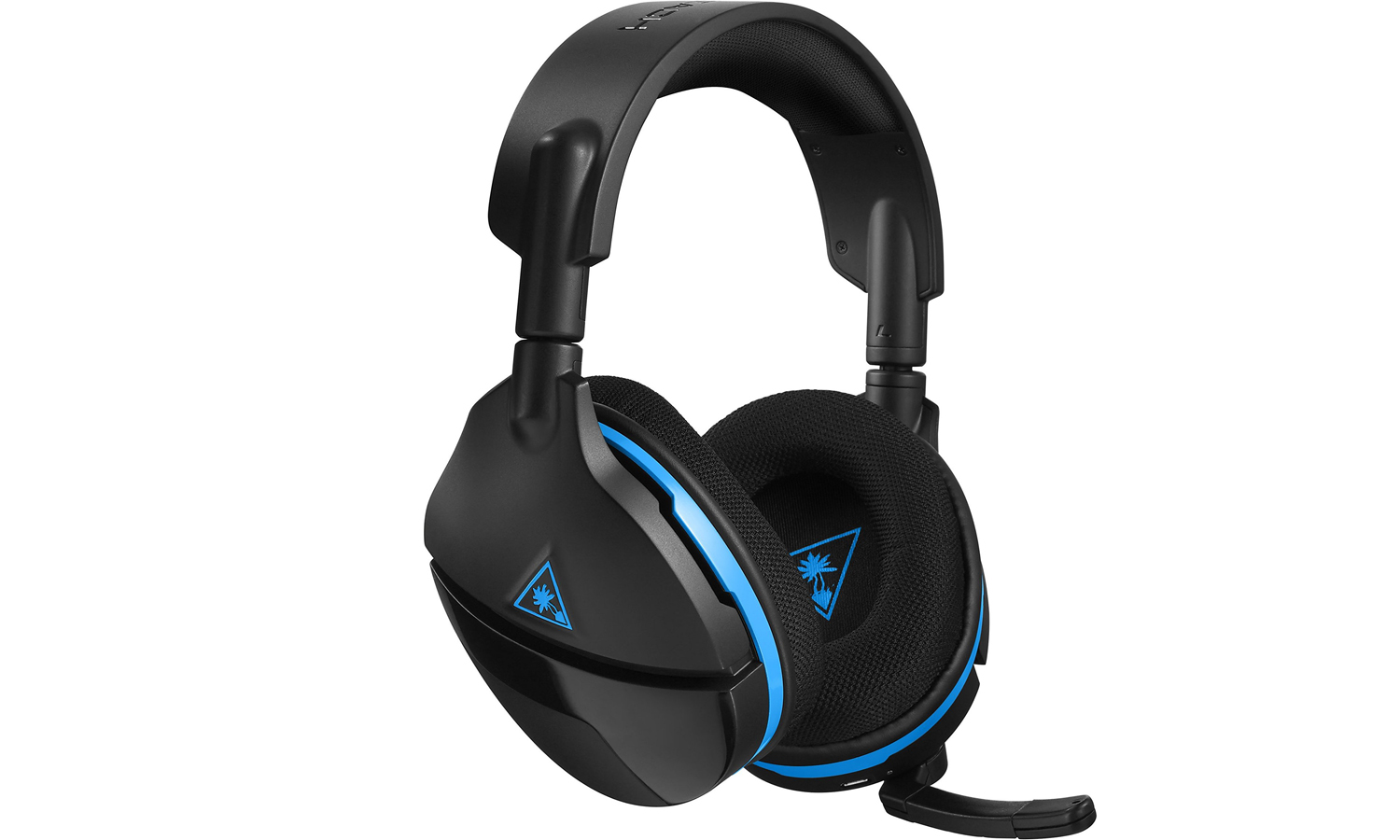Tom's Guide Verdict
The Turtle Beach Stealth 600 is one of the cheaper name-brand wireless headsets, but great sound doesn't fully excuse its awkward design.
Pros
- +
Excellent gaming and music sound
- +
Plush ear cups
- +
Easy wireless connectivity
Cons
- -
Awkward fit
- -
Lackluster mic design
- -
Limited PC compatibility
Why you can trust Tom's Guide
Turtle Beach was once the gold standard for gaming headsets, blowing competitors away with a unique mix of comfort, aesthetics and sound quality. It didn't take long for competitors to get wise, though, and Turtle Beach is now just one very good headset manufacturer in a veritable sea of other very good headset manufacturers.
Enter the Turtle Beach Stealth 600 ($100), a wireless headset for the PS4 or Xbox One that sounds good and doesn't cost too much. A name-brand wireless headset for $100 may sound like a superb deal. However, an awkward mic, a lack of versatility and a truly uncomfortable fit make the Stealth 600 a relatively hard sell.
Turtle Beach made a lot of compromises with the Stealth 600, but those compromises did help make it one of the cheapest wireless gaming headsets around. Weigh your options accordingly.
Design
The Stealth 600 looks like a relic of the just-about-bygone "extreme" gaming era, with sharp angles bisecting the over-ear cups and either bright-green or dark-blue highlights, depending on whether you get the PS4 or Xbox version.

Of particular note is the boom microphone, which folds all the way back, parallel to the ear cup. It's an interesting halfway solution, neither as elegant as a mic that folds into an ear cup nor as jarring as a mic that simply folds up.

The ear cups have a little swivel to them, which helps them fit comfortably, and they fold up for portability. While the foam padding on the headband is plush and has a lot of give, the extendable notches feel cheap and finicky, so getting a good fit requires some trial and error.
The left ear cup can get pretty crowded, since it's home to both the volume dial and the chat-volume dial, which are literally right next to each other. If you think this sounds like a confusing arrangement, you're correct. Although it's pretty easy to remember that the volume is on top and the chat volume is on the bottom, it's extremely simple to dial the wrong one in a heated moment and then wonder why the game hasn't gotten any quieter than before.

Beyond that, all the buttons are pretty simple. The left ear cup (which also houses the charging port; the right ear cup is positively barren by comparison) has a power button, a pairing button and an equalization button, which lets you switch among four modes. While making the left ear cup the functional center of the whole device makes sense from a cost-saving perspective, it's rather crowded from design and aesthetic perspectives.
Comfort
Turtle Beach boasts that the Stealth 600 uses technology called "ProSpecs" to make its ear cups easier on folks who wear glasses. As a bespectacled individual, I can confirm that the headset is unusually easy on the ears, managing to make a good aural seal without ever pressing down too hard.
At first, the headset felt like it might fall off at any moment.
Unfortunately, comfortable ear cups are only half the battle. The Stealth 600 has a strange, upright construction, unlike most gaming headsets, which tend to lean forward a bit. As such, it sits just behind the crown, rather than just behind the forehead, which is not as natural a position.

At first, the headset felt like it might fall off at any moment — even though, in reality, it stayed right where it was supposed to. As it is, it's an irregularity, and not an extremely agreeable one.
MORE: Our Favorite Gaming Keyboards
I handed the Stealth 600 off to a co-worker, and he absolutely despised it. He had the same problems as I did with the headset's strange fit (he thought he was wearing it backward at first), but he also thought the whole thing felt cheap and hard to adjust. The ear cups were comfortable, he said, but they didn't create a good seal at all.
Gaming Performance
Assuming you can keep it on your head long enough to play a game, the Stealth 600 sounds spectacular. The headset offers both stereo and surround sound on the Xbox One or PS4, and no matter which one you choose, the audio is both balanced and clear.
The easy connectivity with consoles is a pleasant respite from juggling wires.
I tested the Stealth 600 with Middle-earth: Shadow of War, Dark Souls and a handful of other games, but I found that the headset did not favor a particular genre. The clang of swords and shields was just as urgent as the ricochet of futuristic gunfire or the cries of otherworldly beasts; a sweeping orchestral soundtrack had just as much impact as a well-delivered line of dialogue.
Features
The thing that sets the Stealth 600 apart from most other headsets in the $100 price range is its wireless functionality. The Stealth 600 syncs directly with an Xbox One or PS4 (the PS4 requires a dongle; the Xbox One doesn't), with a range of more than 20 feet and a battery life of about 15 hours. The wireless signal is flawless, and the easy connectivity with the consoles is a pleasant respite from juggling wires.
On the other hand, it's not so easy to connect the headset to a PC. If you connect it with a USB cord (which you need to do in order to upgrade the firmware or adjust the mic's sidetone), you can't actually listen to anything. The Xbox headset also requires an Xbox One Wireless Adapter to function on a PC, which is an extra pain if you intended to use the Stealth 600 for both Xbox and PC gaming.

Beyond that, the Turtle Beach Audio Hub software doesn't do much except alter the volume of tones. You'll hear these tones when you switch among the headset's four equalization modes, which include balanced sound, treble boost, bass boost and chat boost. The profiles aren't terribly exciting, and I didn't have much reason to switch away from the balanced-sound mode.
MORE: The Best Headsets for Immersive Gaming
The mic is likewise functional, but unimpressive. It doesn't sit that close to a user's mouth, so the pickup is a little quiet unless you project. The background-noise pickup is minimal, and my voice came through clearly, but the sound wasn't very refined. It'll work for everyday multiplayer voice chat, but I wouldn't use it for anything other than that.
Music Performance
What surprised me most about the Stealth 600 was just how well it handled music. In addition to using the headset to listen to the ambient soundtracks from the video games I tested, I hooked it up to a PC (with some difficulty; see above) and listened to Flogging Molly, Gordon Lightfoot, The Rolling Stones, Pyotr Ilyich Tchaikovsky and other musicians.
The Stealth 600 sounds spectacular.
Every track I listened to was rich, subtle and full of life. From detailed rhythm guitar parts, to subtle vocal harmonies, to drum and bass beats that didn't drown out the melody, the Stealth 600 was simply — and surprisingly — one of the best music experiences I've ever had with a gaming headset.
Bottom Line
The Turtle Beach Stealth 600 delivers superlative sound for both gaming and music, which is the most important thing a gaming headset should do. However, it doesn't fit very well, its design feels too crowded and its awkward PC interface makes updates and maintenance a chore. If you can live with a wired model, take a look at the SteelSeries Arctis 5, which conforms to your head shape much better and sounds just as good. Or, if you insist on having a wireless headset and don't mind keeping an eye out for sales, another option is the excellent Logitech G533, which is often available for much less than its $150 retail price.
For $100, you're not likely to get another name-brand wireless headset, let alone one that has such excellent sound. The convenience and sound quality alone may be worth the price; if not, you may have to sacrifice wireless functionality for something more comfortable and versatile.
Credit: Turtle Beach
Marshall Honorof is a senior editor for Tom's Guide, overseeing the site's coverage of gaming hardware and software. He comes from a science writing background, having studied paleomammalogy, biological anthropology, and the history of science and technology. After hours, you can find him practicing taekwondo or doing deep dives on classic sci-fi.

